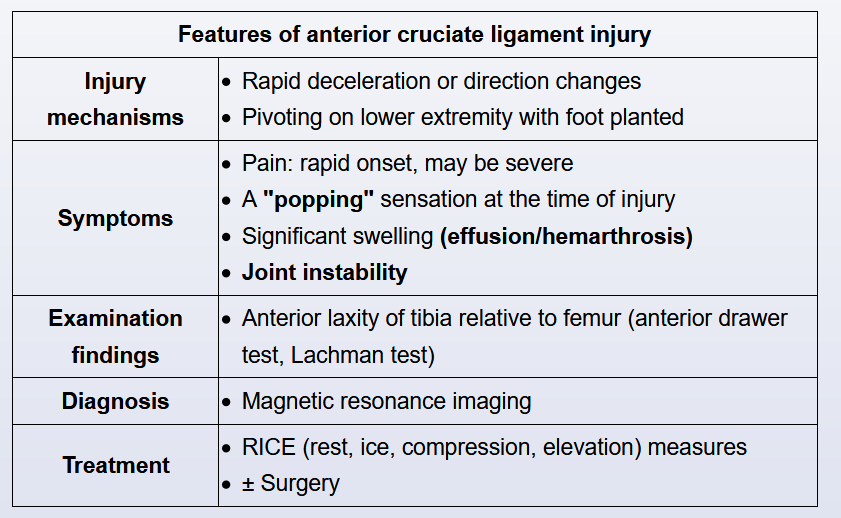ACL
ACL

Injuries to the anterior cruciate ligament (ACL) are common in young athletes, especially women who participate in noncontact sports requiring rapid direction changes or pivots on the lower extremity (eg, soccer, basketball, tennis). ACL tears can also occur in high-contact sports or injuries involving a blow to the knee or significant twisting force. Patients with partial- or full-thickness tears of the ACL complain of a "popping" sensation in the knee at the time of injury, followed by development of rapid-onset hemarthrosis and a feeling of joint instability with weight bearing.
Patients with an ACL tear will show laxity at the knee with the tibia able to be pulled forward relative to the femur. Two such maneuvers - the Lachman test and the anterior drawer test - are highly sensitive and specific for ACL injuries. The diagnosis is usually confirmed on magnetic resonance imaging.
Patients with a meniscal tear may report a subacute or chronic locking or catching sensation in the knee but often do not appreciate the extent of the injury when it occurs. Effusions, when they occur, typically develop slowly and hemarthrosis is rare.
Meniscal tears are possible in athletes subjected to rapid direction changes and are characterized by a subacute or chronic locking or popping sensation in the knee. However, immediate symptoms at the time of the injury may be mild. Effusions are possible but typically develop slowly, and hemarthrosis is rare.